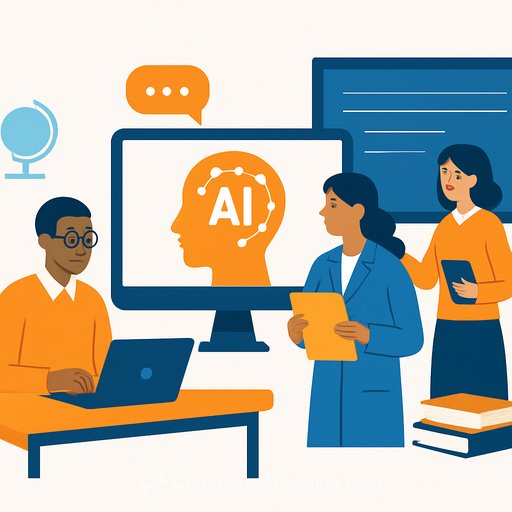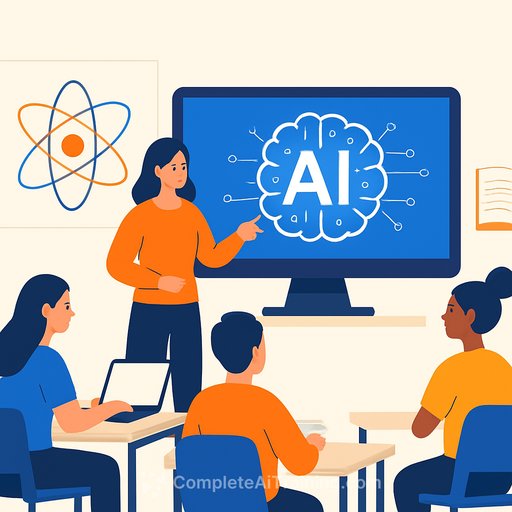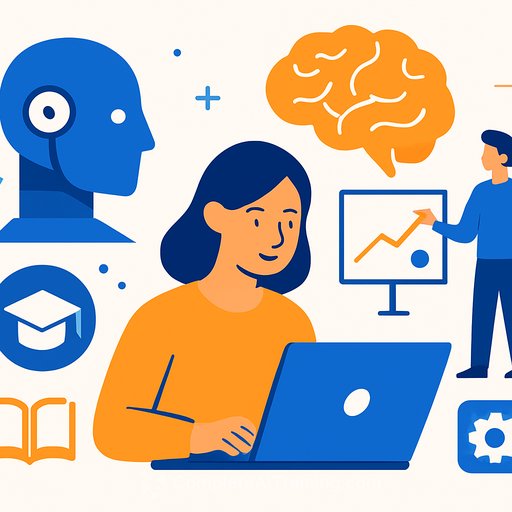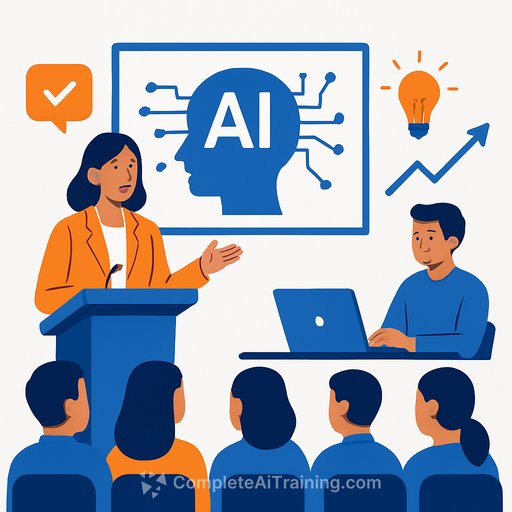Societal Impacts Anthropic Education Report: How Educators Use Claude
Much of the discussion around AI in education focuses on how students use language models to support studying and writing. However, educators are also active users of AI tools. A recent Gallup survey found that teachers save an average of 5.9 hours per week by using AI. Interestingly, some students have raised concerns about professors' use of AI in the classroom.
This article examines AI adoption among university faculty. We analyzed approximately 74,000 anonymized conversations from higher education professionals on Claude.ai during May and June. Additionally, we partnered with Northeastern University faculty to gain qualitative insights into how professors use AI at their institution. The findings offer a clear view of how educators integrate AI into their professional tasks.
Key Findings
Educators Use AI Both Inside and Outside the Classroom
Faculty apply AI to a range of tasks including course material development, grant writing, academic advising, and administrative duties like admissions and financial planning.
Beyond Chatbots: Custom AI Tools
Many educators build their own interactive resources using Claude Artifacts. Examples include chemistry simulations, automated grading rubrics, and data visualization dashboards.
Automating Routine Tasks While Staying Engaged with Complex Work
Educators tend to automate repetitive administrative duties but prefer to stay involved in tasks requiring creativity or direct student interaction, such as lesson planning and grant proposals.
Grading Automation: Mixed Attitudes
AI is used less frequently for grading, but when it is, nearly half of the use involves full automation. This contrasts with faculty concerns about automating assessments and their view that AI is least effective in grading.
How We Identified Educators’ Use of Claude
Analyzing educator AI use is challenging because we don’t collect job titles directly on Claude.ai. Educators’ conversations cover teaching, research, admin, and personal learning, making classification complex.
We filtered conversations linked to higher education email accounts for educator-specific tasks like syllabus creation and grading. This resulted in about 74,000 conversations over two months. We matched these tasks to the O*NET database categories for postsecondary teaching and administration.
Supplementing this data, we conducted interviews with 22 AI-savvy faculty at Northeastern University to explore motivations, concerns, and usage patterns.
Common AI Uses Among Educators
The top applications identified include curriculum development, academic research, and student performance assessment.
- Develop curricula: 57% of conversations
- Conduct academic research: 13%
- Assess student performance: 7%
Faculty also use AI for personal learning, though this was outside the scope of our conversation filtering.
Other notable uses include creating legal scenario simulations, vocational training content, recommendation letters, and administrative documents like meeting agendas.
Why Educators Use AI
- Automate tedious tasks: AI handles routine work such as fundraising or administrative details.
- Collaborative thought partner: AI helps explain concepts in new ways and supports brainstorming.
- Personalized learning: AI enables tailored, interactive experiences for students beyond what one instructor alone can provide.
Building Custom Tools with AI
Educators are not just chatting with AI; they are creating interactive educational resources using Claude’s Artifacts feature. These tools can be deployed directly in classrooms, saving time and enhancing engagement.
Examples of creations include:
- Interactive educational games: Web-based games that teach concepts through gamification.
- Assessment tools: HTML quizzes with automatic feedback, grading rubrics, and performance data processors.
- Data visualization: Interactive displays for subjects like history and science.
- Subject-specific tools: Chemistry stoichiometry games, genetics quizzes, and physics models.
- Academic calendars and scheduling: Interactive calendars for exams, class periods, and events.
- Budget planning: Tools for managing educational institution finances.
- Academic documents: Meeting minutes, emails related to grades and integrity, recommendation letters, and grant applications.
These resources shift AI from a passive assistant to an active collaborator in education.
The Augmentation-Automation Spectrum
Educators balance AI augmentation (collaborative use) and automation (full delegation) differently depending on the task.
- More augmentation:
- University teaching and instruction (77.4%)
- Grant writing (70.0%)
- Advising and mentorship (67.5%)
- Supervising student work (66.9%)
- More automation:
- Financial management and fundraising (65.0%)
- Student records and performance evaluation (48.9%)
- Admissions and enrollment management (44.7%)
Routine administrative tasks are often fully delegated to AI, while tasks requiring creativity or context remain collaborative. For example, lesson planning demands AI guidance to fit students’ current knowledge.
Faculty view AI as a thought partner rather than a substitute, especially in creative tasks like grant writing. Despite concerns, almost half of grading-related AI use shows automation, an area faculty consider least effective.
Rethinking Teaching in the Age of AI
AI tools are changing how students learn and pushing educators to rethink teaching methods. Some professors report shifting away from traditional assignments like research papers toward tasks that AI can’t easily complete.
In coding education, AI allows instructors to focus on conceptual discussions rather than syntax errors. Evaluating AI-generated content for accuracy is becoming a crucial skill for both students and educators.
Some educators see AI-assisted cheating less as a problem and more as a signal to redesign assessments. One faculty member shared how they replaced traditional papers with assignments that challenge students beyond AI's current capabilities.
The goal is to raise the bar, encouraging students to tackle complex, real-world problems that require critical thinking beyond AI’s reach. This shift demands effort from educators and a foundation of skills for students to critically assess AI outputs.
Limitations and Considerations
- Identification limits: Only about 1.5% of conversations from higher education emails were clearly linked to educators, possibly missing many AI interactions.
- Scope: Analysis excludes K-12 educators.
- Early adopter bias: Data likely reflects educators comfortable with AI, not the entire educator population.
- Survey sample: Qualitative data comes from a small group at one university.
- Platform-specific: Focused on Claude.ai usage; patterns may differ on other platforms.
- Time frame: Data covers only May and June, missing seasonal variations in AI use.
Looking Ahead
AI is becoming a versatile tool for educators, from creating interactive simulations to handling administrative tasks. The move from AI as a simple assistant to a creative collaborator can help alleviate resource constraints and improve student engagement.
At the same time, the use of AI in grading remains controversial. The disconnect between attempts to automate grading and faculty skepticism highlights the need for ongoing care in balancing efficiency with educational quality.
Educator attitudes toward AI will likely evolve as tools improve and best practices develop. It’s also important to study how student and educator AI use influence each other and affect learning outcomes.
Educators are experimenting with AI while addressing fundamental questions about their role in an AI-supported classroom. Continuous conversation, thoughtful policy, and research will be essential to ensure AI supports rather than undermines education.
Your membership also unlocks:






